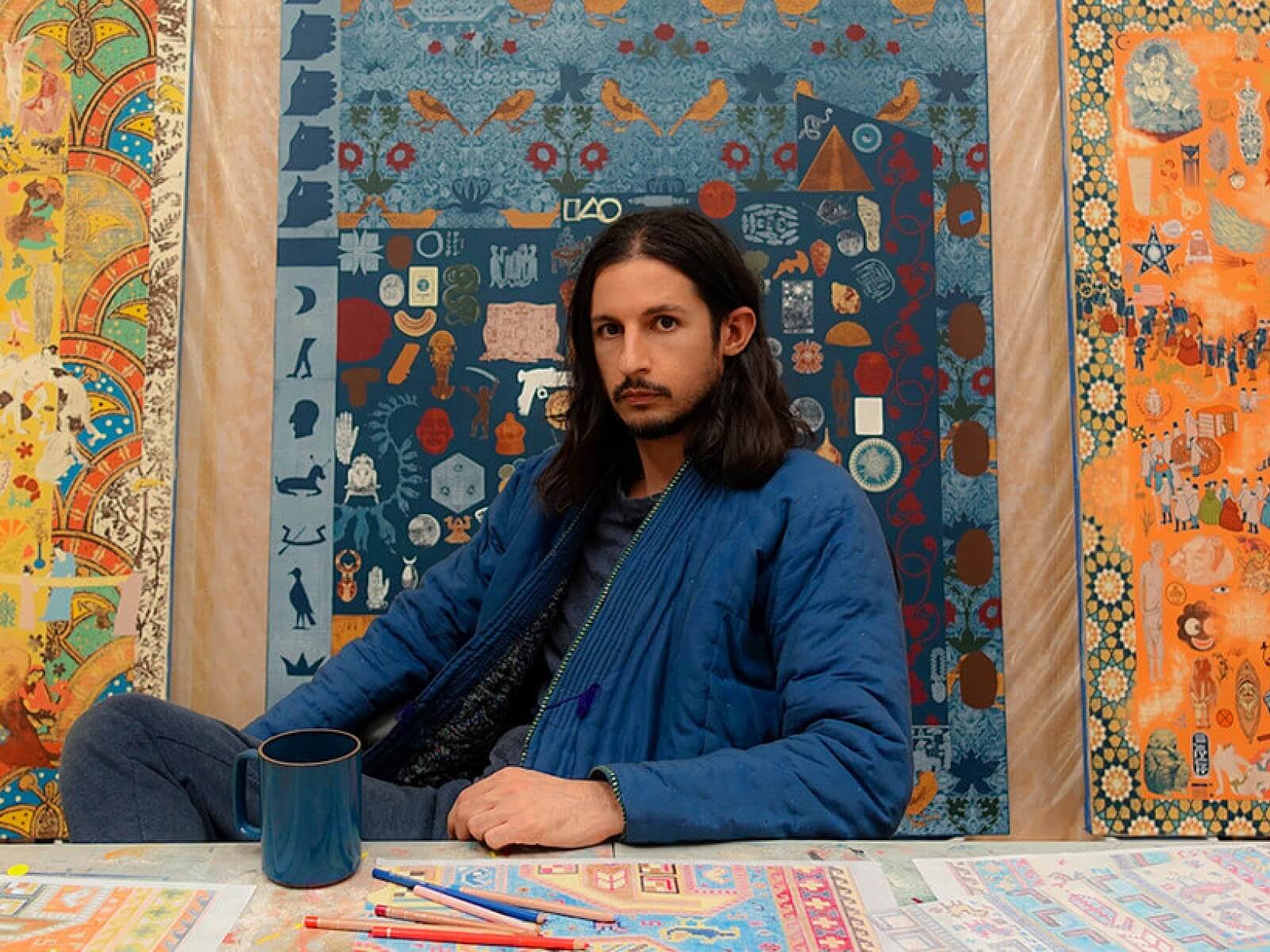Kour Pour
Onnagata
In the middle of the nineteenth century Europe became fascinated by Japan. After two hundred years of isolation the country opened up to trade with the West. A friendly obsession with Japanese art and aesthetics labeled Japonisme became an important trend among Western artists. In particular, Ukiyo-e prints captured the interest of many artists such as Van Gogh, Degas, Gauguin, and Toulouse-Lautrec. These Impressionists and Post-Impressionists, used the characteristics of Ukiyo-e such as lack of central composition and shadows, cropping of pictorial planes, and clean contours that have been incorporated into Western art for good.
In his new series, Tectonic paintings, Kour Pour has produced eight large-scale works using the Japanese Ukiyo-e printing process. The seemingly abstract forms are appropriated from earthquake and volcano maps produced by the Japanese Geological Survey. The resulting paintings share a visual resemblance with contemporary abstraction embedded in an American/European tradition. Similar to his Persian carpet works that display designs and images influenced by early cultural exchange, these new paintings reference already intersectional histories and continue the reshaping/rewriting of visual language in contemporary culture. By highlighting a Japanese process and using it to produce works that are visually based in what is generally thought of as a Western aesthetic, the paintings question ideas of originality/authenticity and complicate the connection between appearance and identity. Known for their instability, tectonic plates form a visual metaphor for the shifting of meaning that is also reflected in the title of the show, Onnagata: the Japanese word for male kabuki actors who play female roles in Japanese theater.
The process of making the Tectonic Paintings is laborious, physical, and ritualistic. First, the geological maps are redrawn onto large printing blocks. Ink is then rolled onto the blocks and hand printed onto canvas. Sections of the block are then cut and removed. A new color is applied and printed again in a repetitive daily procedure. Every print requires the physical pressure of the body and direct contact with the canvas, the strain of which causes the surface to crack and break and the ink to shift and stretch. The importance of the manual labor and craft are documented on the printing blocks that Pour considers a precious diary of everyday work. Quiet and meditative, indispensable but usually disregarded, they carry all the marks and stains that are the accidental and uncalculated results of the process of making and as such remain silent witnesses of artistic labor.

Additional Information

Kour Pour is a British artist of Iranian descent. As such, he explores in his works the ideologies and cultural constructions of East and West, either by the appropriation and highlighting of iconic symbols derived from oriental civilizations, or by experimenting with traditional Asian techniques. He combines a historical and cultural specific moment, the figurative Orient, for instance, with the ahistorical question of painting’s material, that is, paint and color. Using a range of different techniques, such as silkscreen printing or the application of several paint layers by the use of a broomstick, Kour Pour essays to translate the character of particular rugs onto the paneled surfaces.
Born in 1987, he earned his BFA at the Otis College of Art and Design in Los Angeles. Kour Pour was featured on the Forbes 30 Under 30: Art And Style list in 2015 and 2017. He is currently based in Los Angeles.
